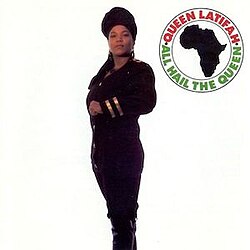"Don't Be Afraid to Fail": Johnny Depp’s Golden Advice to Aspiring Artists
Johnny Depp—Hollywood’s iconic chameleon—has never been just about glitz and glam. Beyond his legendary roles and headline-making life, Depp has become a source of inspiration for artists chasing their dreams. Whether you’re an aspiring actor, musician, or any kind of creative soul, Depp’s career is a testament to embracing risks, resilience, and, most importantly, not fearing failure.
Here’s the truth bomb from Johnny Depp to all young creatives: Don’t be afraid to fail. It sounds cliché, sure, but when this advice comes straight from a man who’s reinvented himself multiple times—from the enigmatic Jack Sparrow to the hauntingly intense Ed Wood—it carries serious weight.
Johnny Depp’s Journey: A Masterclass in Creative Risk-Taking
Depp’s rise from modest beginnings in Kentucky to international stardom was anything but smooth. Early on, he was known for his rebellious spirit and willingness to veer off the beaten path. He famously traded mainstream success for more unconventional, artistic roles—choices that didn’t always pay off commercially but allowed him to explore the depths of his craft.
In interviews, Depp has often reflected on the importance of listening to one’s creative voice rather than chasing validation. For instance, he once said: “If you’re not making mistakes, then you’re not making decisions.” This succinctly captures the essence of his philosophy—failure isn’t a setback but a vital stepping stone towards mastery.
Why Failure Is the Ultimate Teacher According to Johnny Depp
In the era of social media and viral sensations, young artists can feel trapped by the pressure to be perfect and successful overnight. Depp’s advice cuts through this noise. He encourages artists to view failure as an inevitable—but necessary—part of the process. It’s a mindset that fosters growth rather than fear.
Reflecting on his own setbacks—from box-office flops to personal struggles—Depp emphasizes resilience. He reminds aspiring creatives, “You just have to keep your sanity and the fire burning. You have to risk yourself and your comfort zone… If you’re afraid of failing, you might miss out on the most amazing experiences.”
Depp’s Tips for Aspiring Artists: Embrace the Unconventional
We live in a world that often rewards safe choices and formulaic success, but Depp stands as a rebel with a cause. He urges young artists to stay true to their unique vision, even if it means stumbling along the way. His collaborations with visionary directors like Tim Burton are a testament to this daring approach.
Beyond advice, Depp’s career offers a blueprint: take roles that challenge you, collaborate with people who inspire you, and most importantly, accept that sometimes you’ll fall flat—but that’s okay. It’s about the long game, not instant fame.
The Power of Authenticity in a Filtered World
One of the biggest takeaways from Depp’s career is his steadfast authenticity. Fans and aspiring artists alike admire how he stays grounded and real despite Hollywood’s pressures. Authenticity, Depp implies, is what keeps your art meaningful—and failure, ironically, can help strip away the superficial, forcing you to discover your true creative core.
In an age dominated by Instagram highlight reels and TikTok trends, Depp’s message is a refreshing reminder: Your worth as an artist isn’t measured by likes or box office numbers. It’s about passion, perseverance, and the guts to fail big and keep going.
Why Johnny Depp’s Advice Matters Now More Than Ever
The creative landscape today is more competitive and fast-paced than ever. With streaming platforms, endless content, and an explosion of voices, breaking through the noise can seem impossible. Depp’s advice to "not be afraid to fail" is a crucial mindset shift for artists who may feel overwhelmed or discouraged.
His journey reminds us all: Even the most legendary artists face challenges, but it’s the willingness to stumble and learn that makes all the difference. For fans and future stars in the United States and beyond, Depp’s words serve as a rallying cry to embrace imperfection as part of the creative journey.
Final Thoughts: Take Johnny Depp’s Advice to Heart
If you’re an aspiring artist feeling stuck or scared to take that next step, remember Johnny Depp’s timeless wisdom. Failure isn’t your enemy—it’s a trusted mentor guiding you toward your best work. The key is to keep showing up, take bold risks, and remain fiercely authentic.
Depp’s career is proof that paving your own path—even through failure and uncertainty—can lead to iconic success and creative fulfillment. So, to all the dreamers out there: heed Johnny Depp’s advice and never be afraid to fail. Your story is just beginning.
By: koalafriend
Keywords: Johnny Depp advice, aspiring artists, creative risks, don't be afraid to fail, Hollywood inspiration, failure as success, resilience in art, Johnny Depp career tips


